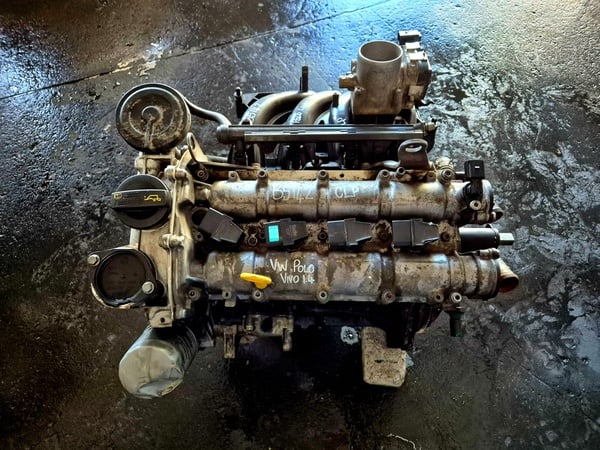How a Clp Engine Can Boost Effectiveness in Different Industries
The introduction of CLP engines notes a considerable shift in functional performance across various industries, driven by their capability to maximize fuel consumption and minimize downtime. Industries such as manufacturing and logistics stand to gain considerably from their durable design and consistent power result, which guarantee to streamline procedures and boost productivity. As organizations increasingly prioritize sustainability together with effectiveness, the function of CLP engines comes to be a lot more essential. What remains to be seen is exactly how these innovations will certainly shape the future landscape of commercial operations and their effect on broader economic fads (clp engine).
Review of CLP Engines
CLP engines, or Continual Liquid Propellant engines, represent a significant advancement in propulsion technology, especially for space applications. These engines utilize a continuous feed system that enables for the continual expulsion of propellant, causing enhanced efficiency and performance compared to conventional strong or hybrid propulsion systems. By preserving a continuous circulation of liquid propellant, CLP engines can attain extra specific thrust control, which is vital for navigating spacecraft in different goal circumstances.
The design of CLP engines incorporates innovative products and ingenious gas administration systems. clp engine. This leads to decreased weight and enhanced integrity, crucial factors for long-duration space objectives. The continuous procedure reduces the risk of burning instability, a typical obstacle in standard rocket engines.

Benefits in Production
The manufacturing of Continual Fluid Propellant (CLP) engines provides numerous notable benefits that improve both effectiveness and cost-effectiveness. Among the main advantages is the streamlined production procedure, which reduces the intricacy connected with conventional propulsion systems. By making use of fluid propellant, suppliers can attain greater accuracy in engine performance, causing optimized power output and reduced waste.
Furthermore, CLP engines help with a higher level of modularity, permitting less complicated combination into different manufacturing lines. This flexibility can dramatically decrease preparations and boost total operational adaptability. The use of CLP innovation likewise has a tendency to reduce the need for extensive maintenance because of fewer moving components, which translates right into decreased downtime and operational costs.

Applications in Logistics
Leveraging Constant Fluid Propellant (CLP) engines in logistics supplies substantial advantages in operational performance and reliability. These engines supply a durable service for numerous transportation needs, enabling the seamless activity of items across substantial distances. The intrinsic layout of CLP engines enables consistent power outcome, which translates into smoother and extra foreseeable transport timetables.
Among the vital applications of CLP engines in logistics remains in sturdy freight transportation, where they can drive description both ground and aerial vehicles. Their ability to maintain high performance under varying tons conditions guarantees that delivery timelines are satisfied, thus improving client fulfillment. Furthermore, CLP engines can be integrated right into automated logistics systems, facilitating real-time monitoring and maximizing path preparation.
Furthermore, the sturdiness of CLP engines decreases upkeep downtime, allowing logistics companies to maximize their functional capabilities. This is specifically beneficial in warehousing operations, where efficiency in handling and delivering products is crucial. As logistics remains to develop, the combination of CLP engines represents a forward-thinking approach that not only enhances performance however likewise supports the industry's growing demands for dependability and speed.
Effect On Power Efficiency
Exactly How do Constant Liquid Propellant (CLP) engines improve power efficiency in transport? CLP engines use a constant circulation of liquid fuel, maximizing combustion processes and keeping a steady thrust result. This design lessens power losses connected with traditional combustion engines, where gas distribution can differ and bring about inadequacies.
The continuous procedure of CLP engines enables for an extra effective thermal cycle, resulting in higher specific impulse contrasted to conventional engines. clp engine. This equates to reduced fuel usage for the same quantity of work done, considerably lowering functional costs throughout different transport sectors, consisting of aeronautics and maritime industries
Moreover, the capability of CLP engines to preserve optimum performance under varying load conditions reduces the need for frequent velocity and deceleration, further enhancing fuel effectiveness. Enhanced power effectiveness not just contributes to cost savings however likewise causes lower greenhouse gas emissions, straightening with global sustainability goals.
Future Trends and Innovations
Arising improvements in Constant Fluid Propellant (CLP) engine innovation pledge to revolutionize the landscape of transportation performance and sustainability. As industries pivot towards greener choices, CLP engines stand at the forefront, integrating ingenious materials and design approaches that improve efficiency while decreasing ecological impact.
Among the most encouraging fads is the fostering of hybrid systems that integrate CLP engines with renewable power resources. This harmony can enhance gas Full Article usage and minimize emissions, lining up with worldwide sustainability goals. Additionally, developments in computational liquid dynamics (CFD) are assisting in the design of more aerodynamically effective engines, causing reduced drag and improved gas performance.
In addition, the development of smart tracking systems is set to improve functional efficiencies. These systems leverage data analytics and IoT web technology to maximize engine performance in real-time, ensuring that the engines operate within their most reliable specifications.
As research study remains to check out different propellant formulas-- such as biofuels and artificial fuels-- the future of CLP engines looks encouraging. By utilizing these developments, sectors can not just enhance their performance yet also add significantly to a cleaner, a lot more sustainable future in transport.
Verdict
In verdict, CLP engines represent a substantial innovation in effectiveness throughout multiple industries. The assimilation of innovative materials and fewer relocating components minimizes upkeep needs, while alignment with sustainability objectives placements CLP engines as a pivotal innovation for the future.